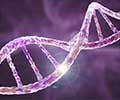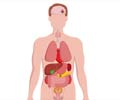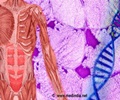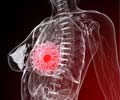Alternating hemiplegia of childhood (AHC) is a rare disorder that usually begins in infancy.

Researchers at the University of Utah Departments of Neurology and Human Genetics, in collaboration with researchers at Duke University Medical Center, have discovered that mutations in the ATP1A3 gene cause the disease in the majority of patients with a diagnosis of AHC. The study was published online on Sunday, July 29, 2012, in Nature Genetics.
In a collaborative effort with the AHC Foundation, Kathryn J. Swoboda, M.D., co-first author on the study, associate professor of neurology and pediatrics, and director of the Pediatric Motor Disorders Research Program at the University of Utah, established an international database of patients with AHC from around the world, starting with a single family nearly 14 years ago. This database now includes 200 affected individuals from more than a dozen countries. Access to clinical information and DNA samples from this database were critical to the success of the international collaboration that helped to identify the first gene causing AHC in a significant percentage of patients.
"AHC is almost always a sporadic disease, which means that there is no family history of the disorder," says Tara Newcomb, genetic counselor, University of Utah Department of Neurology, and a co-author of the study. "The rarity of the disease and the almost exclusively sporadic inheritance made AHC an ideal candidate for next-generation sequencing."
The mysterious and intermittent nature of the neurologic symptoms, which range from unusual eye movements to seizure-like episodes, to partial and/or full body paralysis often results in a prolonged diagnostic odyssey for parents and children, according to Matthew Sweney, M.D., an instructor in the U of U Departments of Neurology and Pediatrics and an epilepsy specialist at Primary Children's Medical Center. "Families often present again and again to the emergency room, and children may undergo dozens of tests and invasive procedures," says Sweney, also a study co-author. "Often, it is only after the spells fail to respond to antiepileptic medications that the diagnosis is considered."
The ATP1A3 gene encodes one piece of a key transporter molecule that normally would move sodium and potassium ions across a channel between neurons (nerve cells) to regulate brain activity. Mutations in this gene are already known to cause another rare movement disorder, rapid onset dystonia parkinsonism, and clinical testing for mutations in this gene is readily available through a blood test. "Having a means to confirm a diagnosis more quickly, using a simple blood test, will allow us to better care for our patients and provide them opportunities for early enrollment in clinical trials," Swoboda says. "The identification of the gene provides scientists with the opportunity to identify specifically targeted and truly effective therapies."
Advertisement
Source-Eurekalert













